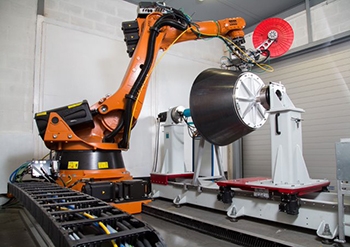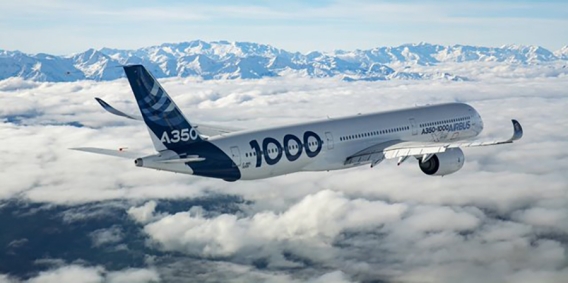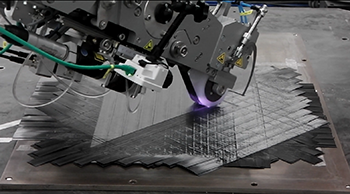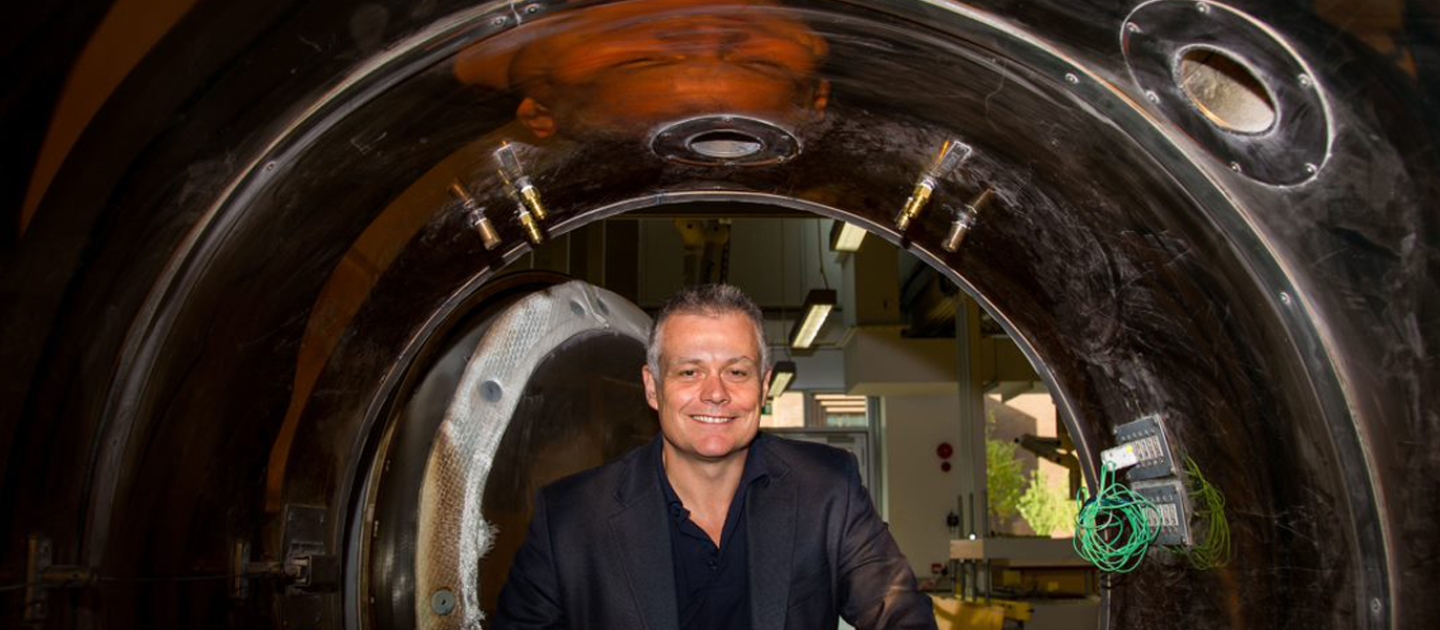When an industry professional advises a research team that they are helping ‘to close the gap between academic research and an industrial application’, they know that it is a fairly resounding endorsement of the work
And that is the case for University of Limerick principal investigators, Bernal Chair of Composite Materials, Professor Paul Weaver and Dr Ronan O’Higgins, of the IComp funded ProLaTS project.
The pair are behind the development of a new commercial aircraft wing box at University of Limerick which is made from lightweight composite materials for Airbus, a global leader in the design and manufacture of aircraft wings.
This novel design technique involves steering the fibres in the wing skin to increase the structures buckling load, which uses less material to achieve the same structural performance, leading to a lighter, more fuel-efficient aircraft. In addition, innovative manufacturing methods now allow the use of carbon fibre-reinforced thermoplastic materials in the structure, which have a higher structural performance and are inherently more recyclable than conventional composite material currently used in aircraft like the Boeing 787 and Airbus A350.
Traditionally, aerospace thermoset based composite materials require energy intensive autoclave (large pressurised oven) processing. However, UL researchers are using a process called laser-assisted automatic tape placement (LATP) that lays down successive layer of composite material, laser welding them in place during the lay-up.
This type of in-situ consolidation of composite material allows the efficient processing of very large structures in a less energy intensive way and reduces associated processing waste.
The state-of-the-art manufacturing technique, LATP, minimizes the production steps, promotes the time and cost effectiveness and fulfils the demand for repeatability during the manufacturing procedure.
Design methods focus on advanced stress analysis development and subsequent tool development that exploits a new combination of materials and manufacturing technology developed at the Bernal Institute.
As a result of the research work at UL, a Memorandum of Understanding has been signed with Airbus UK after the project caught their attention.

In turn, Airbus UK have agreed to test the demonstrator wing box at their wing-testing centre in Filton in the UK, while aerospace material developer and supplier, Teijin Carbon Europe Ltd., are collaborating on the project by providing material and technical support.
The work is funded through the Science Foundation Ireland VARICOMP project and the Irish Composites Centre and aims to reduce weight in aerospace structures reduce fuel burn and increase performance in wind.
The VARICOMP research team received an award in 2018 for preliminary work in this area at the American Institute of Aeronautics and Astronautics (AIAA) Scitech Conference, the largest aerospace conference in the world.
Professor Weaver told UL Links that “the LATP technique is fully automated, more repeatable, quicker and efficient than traditional methods. Carbon fibre composite materials are considerably lighter and stronger than its metallic counterpart.
As such, the considerable fuel reduction brings about a concurrent reduction of the impact that this component has on the environment”.
There is an environmental aspect to this according to the project leaders, as Professor Weaver explained.

“By using thermoplastic material there is greater potential for recyclability of this product at the end-of-life stage. This is highly beneficial as there are many EU directives currently stating that all composite structures need to now be designed with end-of-life disposal or recovery in mind due to the large amount of fibre reinforced plastics (FRP) ending up in landfill.”

As for the endorsements by industry professionals, Thomas Cook, Head of A350 Structures Architecture and Integration Team, Department – ESKI, AIRBUS said: “It is impressive to see that the University of Limerick have used a component test to validate a group of research technologies such as thermoplastic integrated primary structure and non-conventional laminates.
“The team have learned a tremendous amount from this vehicle which will enable further development and optimise their research technologies.
“This approach is closer to that used in industry and will help close the gap between academic research and an industrial application.”
Lt Col David M Garner, International Program Officer of US Airforce Office of Scientific Research (AFOSR) and The European Office of Aerospace Research and Development (EOARD), also showed his interest to collaborate with the group after visiting and quoted about the research works conducted in Varicomp project at Bernal Institute.

The University of Limerick’s Bernal Institute possesses a remarkable ability to go from concept to implementation in a very short time.
The combination of talent, knowledge, and ingenuity of the faculty, staff, and students, along with unique capabilities to produce bespoke equipment, processes, and methods enables their impressive range of research and accomplishments.”
Professor Weaver explained that the next step of this work is to further investigate and upgrade the research objective to large scale structures.
“There has been a significant increase on various environmental issues related to the composites materials industry, including the ever-increasing levels of non-recyclable plastic being used, and increasing level of greenhouse gases emitted worldwide.
“This development has put the Composite Cluster at the Bernal Institute at the forefront of the advanced composites technology, generating interest from the world leader in the aerospace sector. Many benefits have arisen from the development of the innovative composite wingbox.”
- Andrew Carey
Interested in studying at UL?
